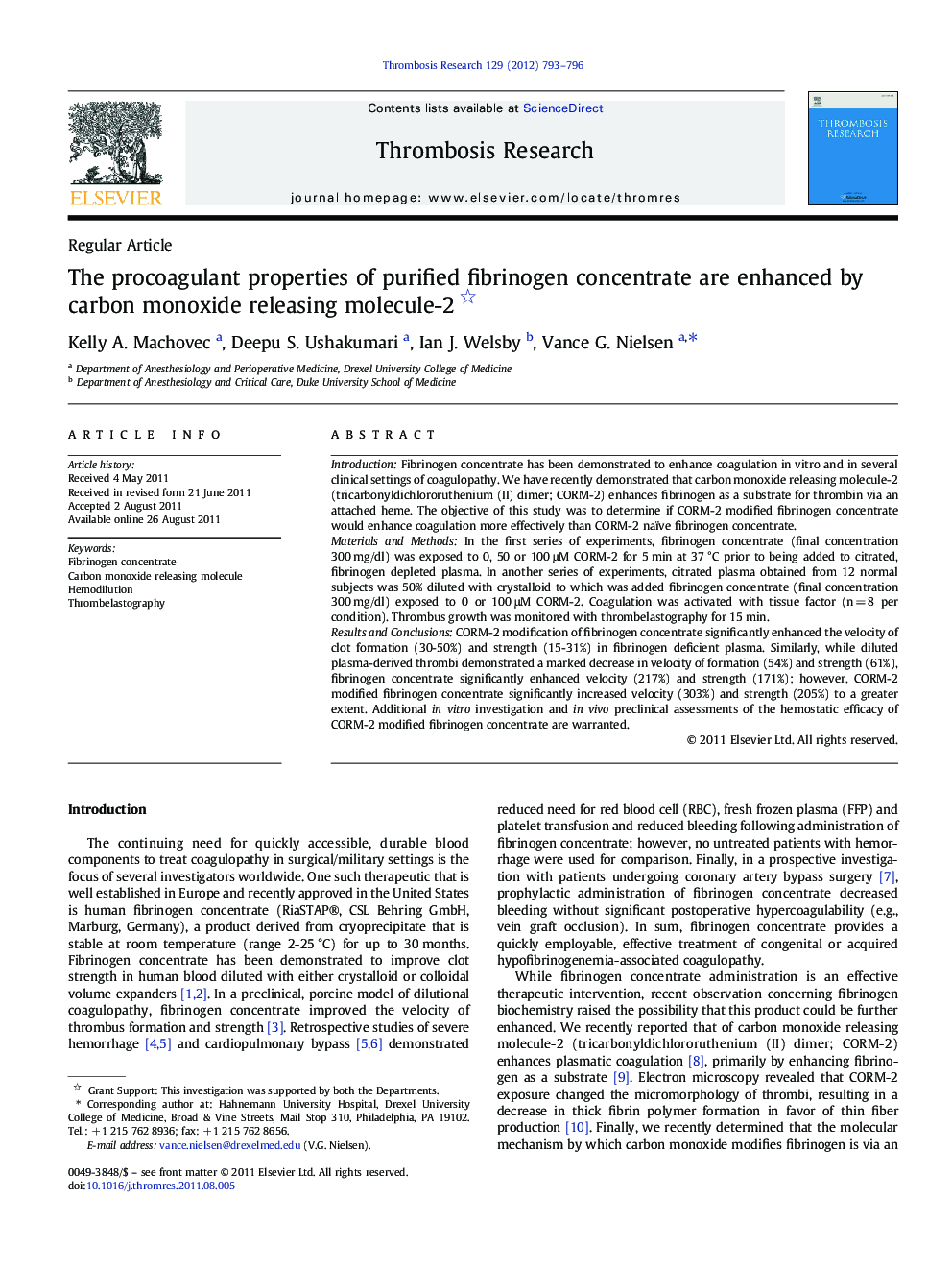| Article ID | Journal | Published Year | Pages | File Type |
|---|---|---|---|---|
| 6002570 | Thrombosis Research | 2012 | 4 Pages |
IntroductionFibrinogen concentrate has been demonstrated to enhance coagulation in vitro and in several clinical settings of coagulopathy. We have recently demonstrated that carbon monoxide releasing molecule-2 (tricarbonyldichlororuthenium (II) dimer; CORM-2) enhances fibrinogen as a substrate for thrombin via an attached heme. The objective of this study was to determine if CORM-2 modified fibrinogen concentrate would enhance coagulation more effectively than CORM-2 naïve fibrinogen concentrate.Materials and MethodsIn the first series of experiments, fibrinogen concentrate (final concentration 300 mg/dl) was exposed to 0, 50 or 100 μM CORM-2 for 5 min at 37 °C prior to being added to citrated, fibrinogen depleted plasma. In another series of experiments, citrated plasma obtained from 12 normal subjects was 50% diluted with crystalloid to which was added fibrinogen concentrate (final concentration 300 mg/dl) exposed to 0 or 100 μM CORM-2. Coagulation was activated with tissue factor (n = 8 per condition). Thrombus growth was monitored with thrombelastography for 15 min.Results and ConclusionsCORM-2 modification of fibrinogen concentrate significantly enhanced the velocity of clot formation (30-50%) and strength (15-31%) in fibrinogen deficient plasma. Similarly, while diluted plasma-derived thrombi demonstrated a marked decrease in velocity of formation (54%) and strength (61%), fibrinogen concentrate significantly enhanced velocity (217%) and strength (171%); however, CORM-2 modified fibrinogen concentrate significantly increased velocity (303%) and strength (205%) to a greater extent. Additional in vitro investigation and in vivo preclinical assessments of the hemostatic efficacy of CORM-2 modified fibrinogen concentrate are warranted.
